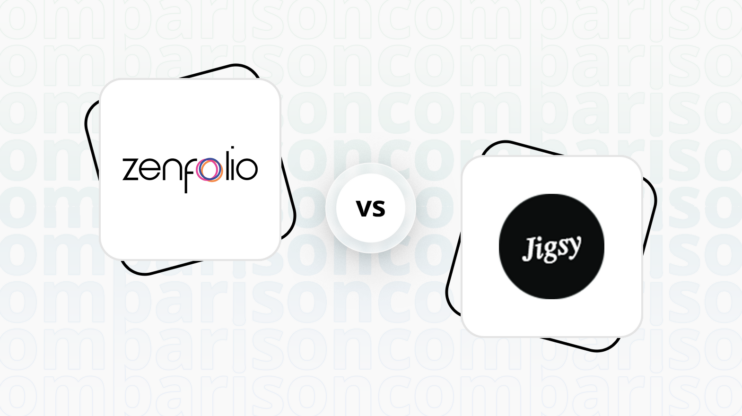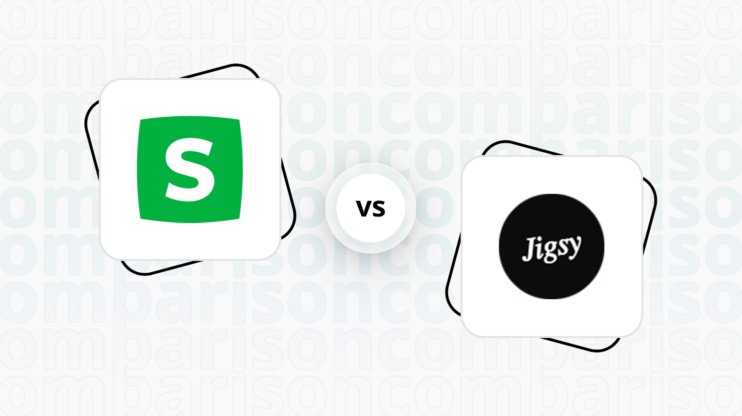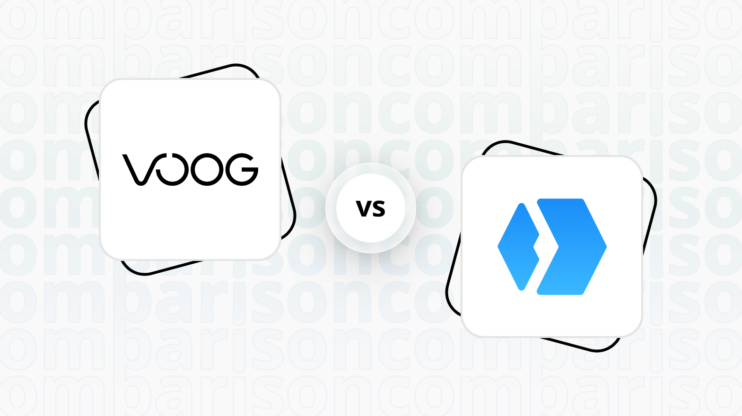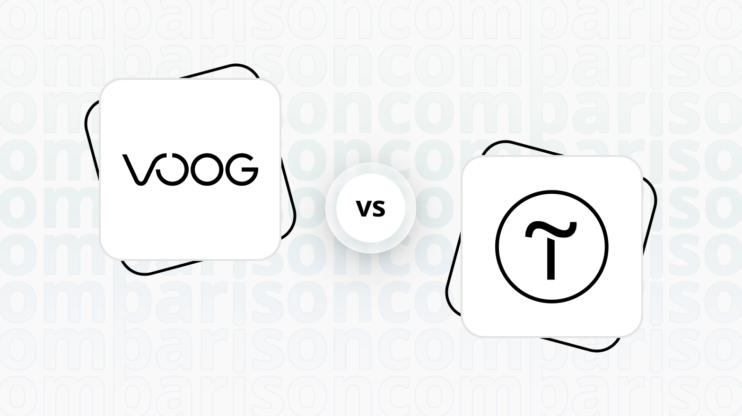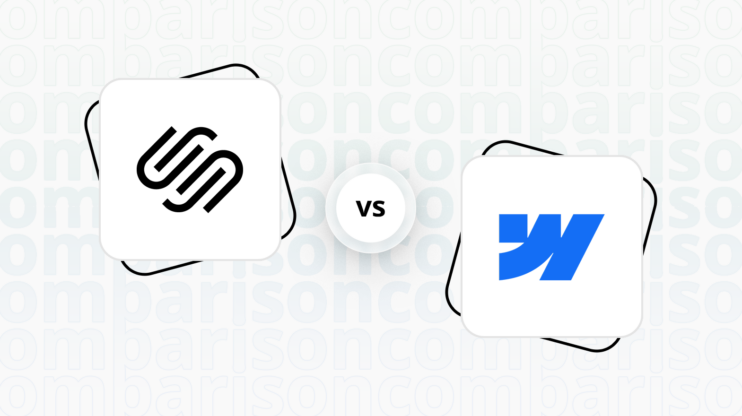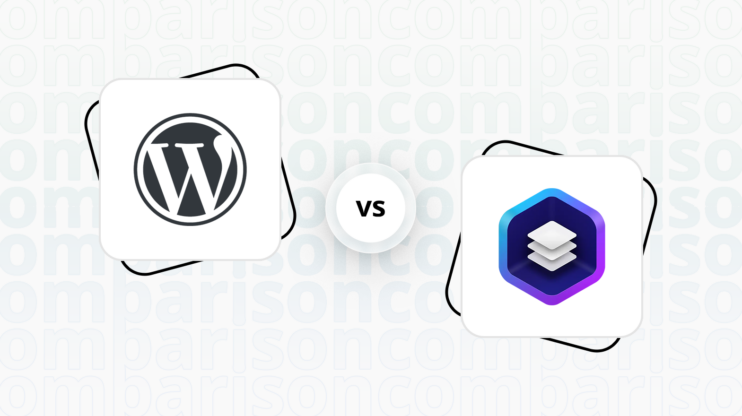Final verdict
Drupal and Unbounce both offer unique strengths, making them suitable for different types of users and purposes.
-
Drupal (Overall Grade: 6.4/10)
is a highly flexible and powerful open-source content management system. It excels in creating complex websites with custom functionalities, making it ideal for developers and organizations needing extensive customization. Drupal’s vast array of modules and themes, along with its strong community support, make it a versatile choice for various types of websites, from personal blogs to government sites. However, its steep learning curve and need for technical expertise can be challenging for beginners. -
Unbounce (Overall Grade: 6.4/10)
is a user-friendly website builder focused on creating high-converting landing pages, popups, and sticky bars. It is particularly favored for its ease of use, drag-and-drop interface, and strong emphasis on optimizing conversion rates. Unbounce integrates seamlessly with numerous marketing tools and analytics platforms, making it an excellent choice for marketers looking to capture leads and launch campaigns quickly. However, it lacks the depth of ecommerce features and customization options that Drupal offers.

|

|
|
|---|---|---|
|
Design functionalities & templates |
7.8 |
7.8 |
|
Ease of use |
5.4 |
8.2 |
|
Ecommerce |
7.5 |
4.8 |
|
Website Editors |
7.5 |
7.5 |
|
Product testing options |
7.1 |
6.6 |
|
Price |
5.7 |
7.0 |
|
Hosting quality |
0 |
3.9 |
|
Website speed optimization |
6.4 |
5.6 |
|
Plugins and integrations |
8.6 |
6.8 |
|
Marketing features |
8.0 |
7.4 |
|
Customer support |
6.7 |
7.7 |
|
Security |
8.3 |
8.4 |
|
AI capabilities |
7.5 |
7.5 |
|
User Management |
9.1 |
7.2 |
Best for ecommerce
 7.5
7.5
 4.8
4.8
Verdict
: Drupal is better suited for comprehensive ecommerce solutions, while Unbounce excels in creating high-converting landing pages with ecommerce integrations.
-
Drupal
: Known for its flexibility and extensive ecommerce features, Drupal is ideal for businesses that require a robust and customizable ecommerce platform. It offers a wide range of modules and themes, making it suitable for complex ecommerce needs. However, it has a steep learning curve and may require extensive customization. -
Unbounce
: Specializes in creating, testing, and optimizing landing pages for conversions. While it integrates well with ecommerce platforms like Shopify and Ecwid, it lacks in-depth ecommerce features. Unbounce is perfect for businesses focusing on conversion optimization rather than comprehensive ecommerce functionalities.
Best for informational & business websites
 7.5
7.5
 5.9
5.9
Verdict
: When it comes to Drupal vs Unbounce for informational and business websites, Drupal stands out due to its flexibility and extensive customization options, while Unbounce excels in ease of use and conversion-focused design.
-
Drupal
: Drupal is a robust open-source CMS that offers unparalleled flexibility and extensibility, making it ideal for complex informational websites. With a wide range of modules and themes, it can be tailored to meet specific business needs. However, its steep learning curve may be a barrier for beginners. Drupal scores 7.5 in this category, reflecting its strong capabilities for creating versatile and feature-rich websites. -
Unbounce
: Unbounce is designed for creating high-converting landing pages, popups, and sticky bars, making it a powerful tool for marketing-focused informational sites. Its user-friendly drag-and-drop interface and integration with various marketing tools make it easy to design and optimize pages without coding. However, its focus on landing pages limits its versatility for broader informational website needs. Unbounce scores 5.9, indicating its niche strength in conversion optimization but limited scope for comprehensive informational sites.
Detailed comparison
Design functionalities & templates
Design FunctionalitiesRepresents how well each platform allows for creative design and customization of websites.Score Components:
- Template Variety (30%): Range and quality of design templates.
- Customization (30%): Flexibility and options for design alterations.
- User Interface (20%): Ease and intuitiveness of the design process.
- Responsiveness (10%): Adaptability to different devices and screen sizes.
- Innovation (10%): Unique design features and tools.
 7.8
7.8
 7.8
7.8
🏆
Winner: Tie.
Both Drupal and Unbounce offer a wide range of design functionalities and templates, making them both excellent choices depending on your specific needs.
Drupal, as a highly flexible and powerful content management system, offers a vast array of templates and designs to cater to virtually any website need. With thousands of themes available, users can choose from minimalist designs, industry-specific layouts, and highly customizable multipurpose themes.
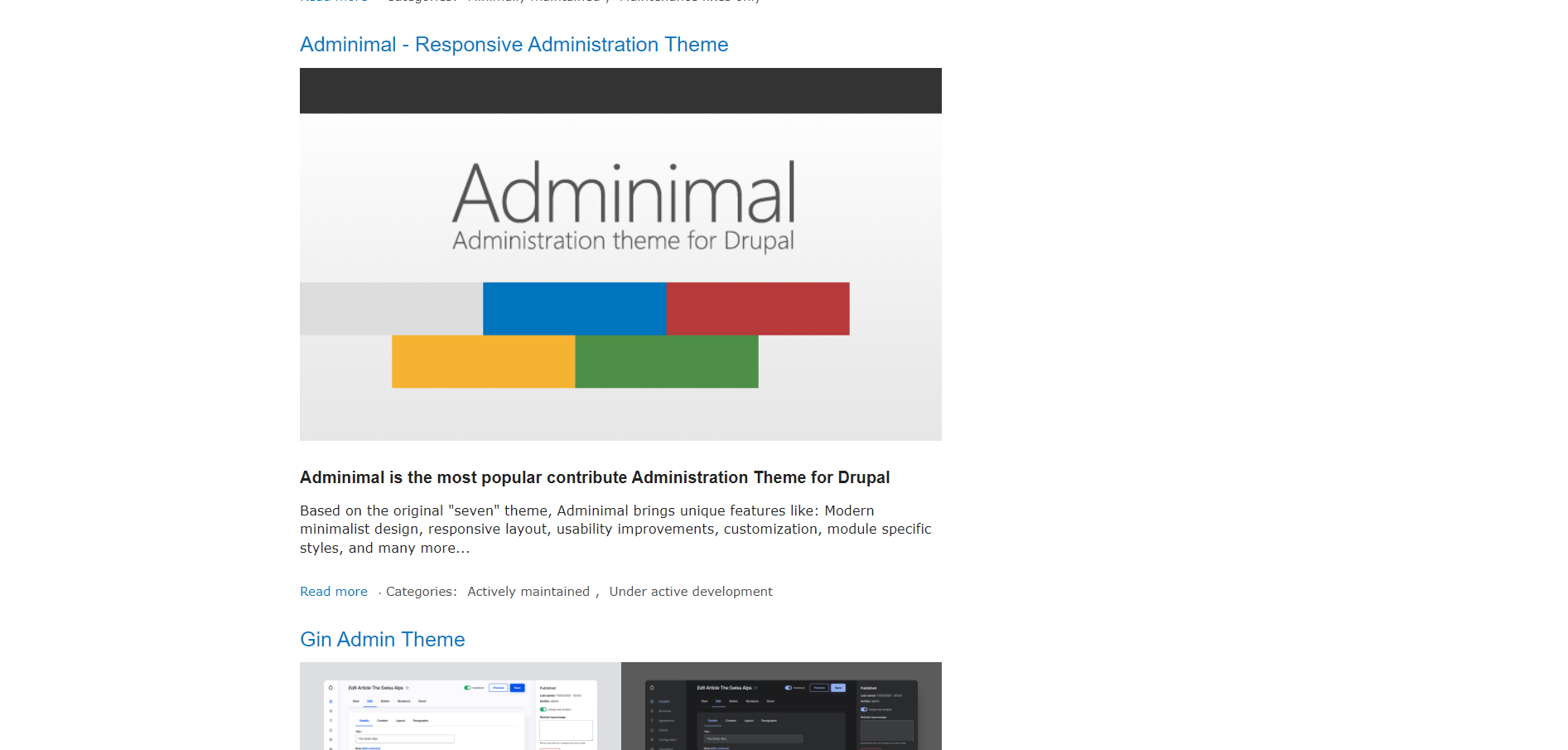
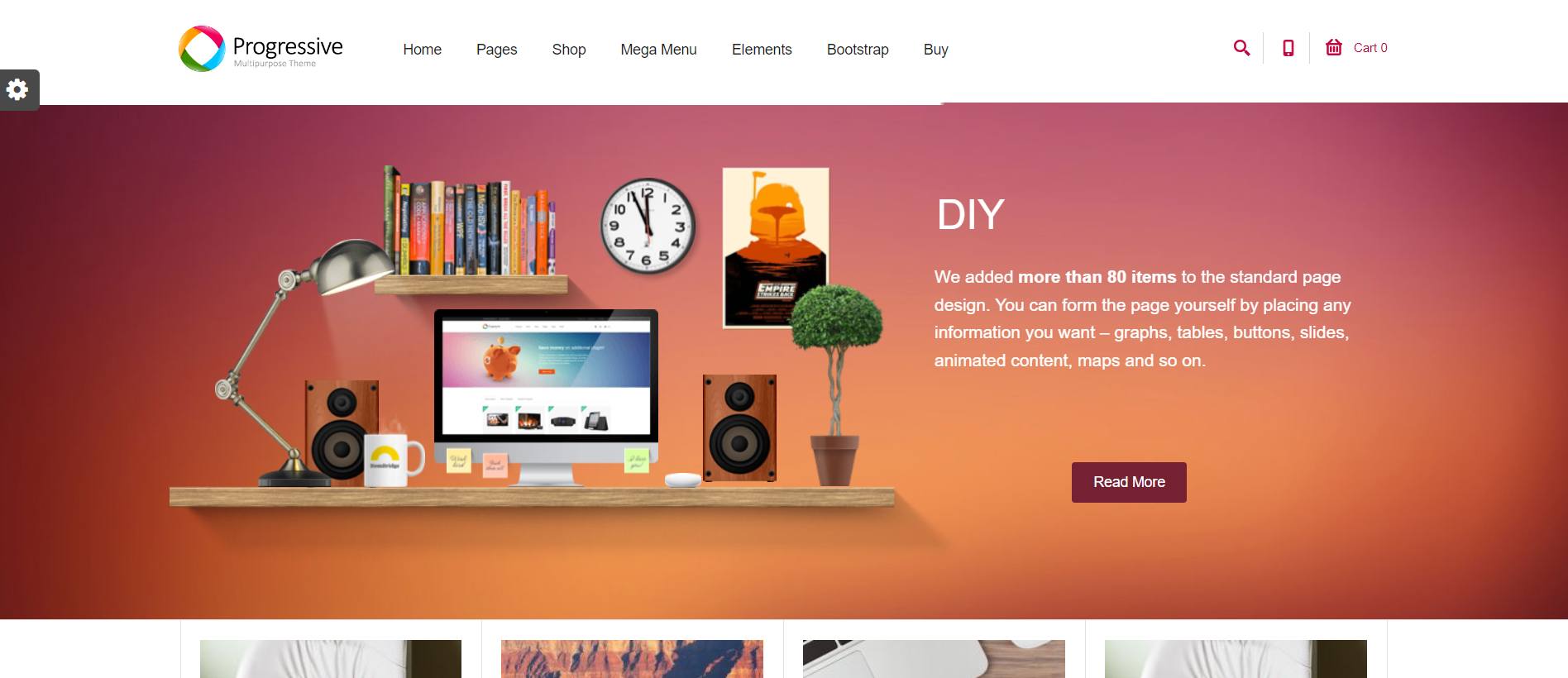
On the other hand, Unbounce provides a gallery of over 100 high-converting templates for landing pages, popups, and sticky bars. These templates are designed with conversion in mind, incorporating knowledge and insights gained from Unbounce’s experience in optimizing landing pages.
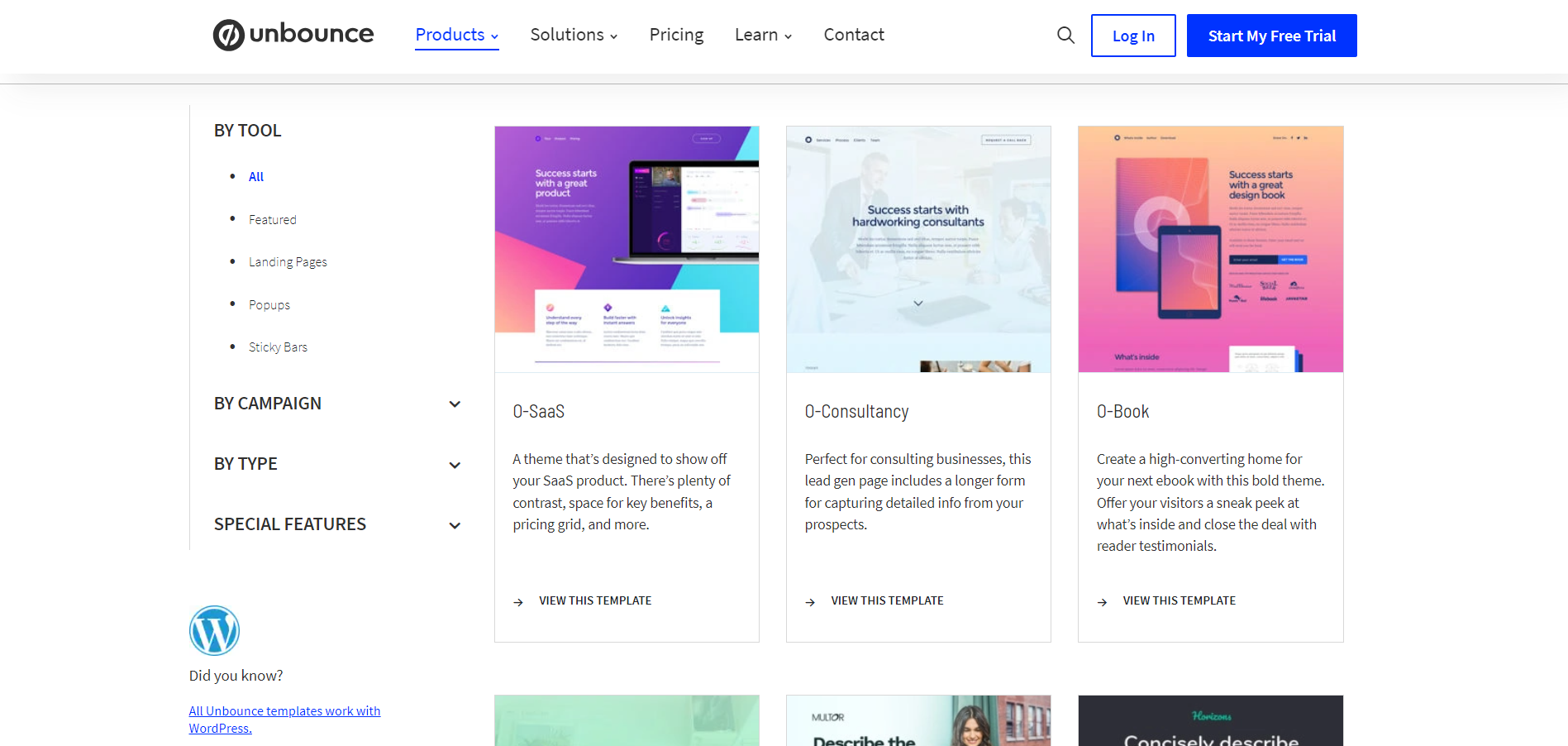
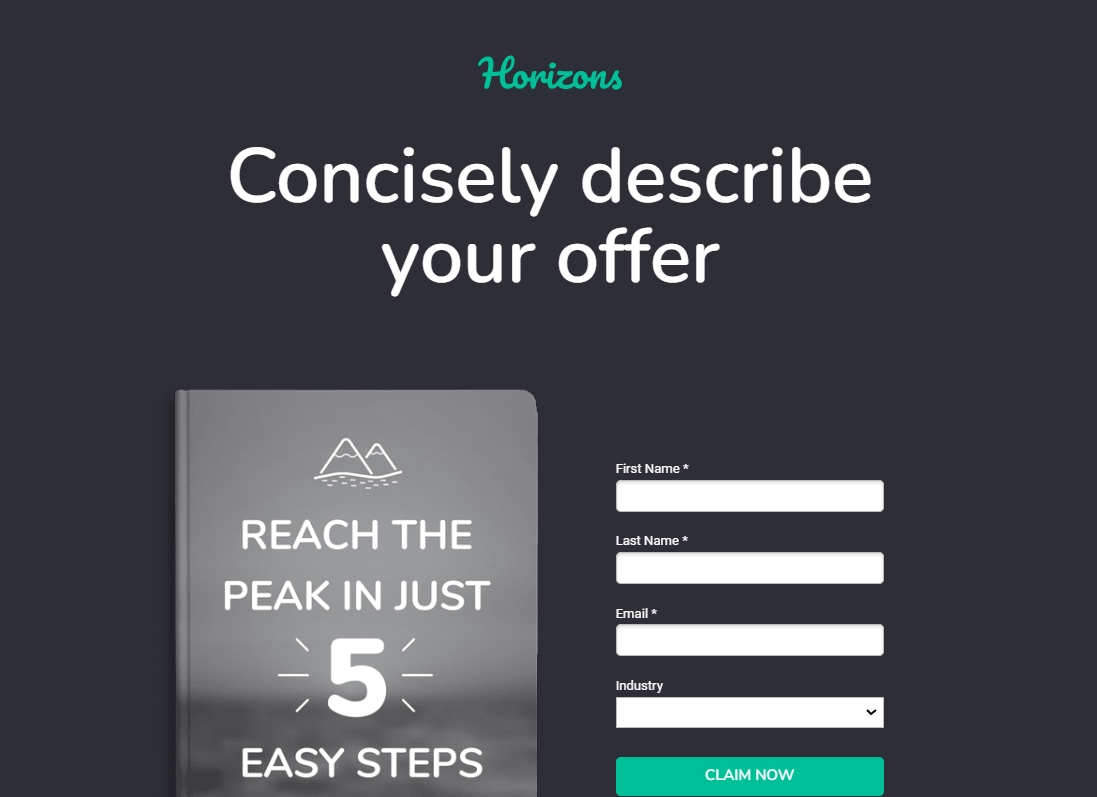
Get a head start on website creation with AI
Create a custom website tailored to your business needs 10X faster with 10Web AI Website Builder!
Ease of use
Ease of useReflects the platform’s overall user-friendliness.Score
Components:
- Learning curve (40%): Quickness and ease of getting started.
- Interface design (30%): Simplicity and intuitiveness of layout.
- User guidance (20%): Quality of tutorials and support.
- Flexibility (10%): Adaptability to various user skills.
 5.4
5.4
 8.2
8.2
🏆 Winner: Unbounce
. With a score of 8.2, Unbounce is known for its user-friendly interface and intuitive drag-and-drop builder, making it easy for users to design and customize landing pages. On the other hand, Drupal, scoring 5.4, is a powerful platform for building complex websites and applications, but its flexibility comes with a steep learning curve, especially for beginners.
Learning Resources
🏆 Winner: Drupal
. Both platforms offer solid learning resources, but Drupal provides a wealth of resources, including extensive official documentation, a vibrant community forum, and a variety of online courses and tutorials. Unbounce also offers a rich collection of learning resources, but Drupal’s resources are more comprehensive and cater to a wider range of user expertise levels.
For ecommerce
EcommerceMeasures the platform’s effectiveness in supporting online business activities.Score Components:
- Ecommerce themes and templates (20%): Variety and design of templates.
- Product management (25%): Ease of managing and organizing products.
- Payment options (25%): Variety and convenience of payment methods.
- Ecommerce features (20%): Features for managing an ecommerce store.
- Integration (10%): Compatibility with external e-commerce tools and services.
 7.5
7.5
 4.8
4.8
When it comes to ecommerce, Drupal and Unbounce offer different approaches. Drupal, with its Drupal Commerce module, provides a comprehensive ecommerce solution that integrates seamlessly with its content management system. It offers features like product management, shopping cart, payment gateway integration, and customizable workflows. However, it has a steep learning curve and may require extensive customization to meet specific ecommerce needs.

|

|
|
|---|---|---|
|
Ecommerce themes and templates |
7.8 |
2.0 |
|
Product page customization |
8.3 |
3.0 |
|
Payment processing and commissions |
7.5 |
6.5 |
|
POS capabilities |
5.5 |
0.0 |
|
Payment gateways |
7.7 |
7.0 |
|
Product numbers |
7.0 |
0.0 |
|
Additional ecommerce features |
8.0 |
4.5 |
Drupal ecommerce features:
- Shopping Cart and Checkout Process
- Payment Gateway Integration
- Order Management and Invoicing
- Tax Calculation and VAT Support
- Shipping and Fulfillment
- Promotions and Discounts
- Reporting and Analytics
- Security and Compliance
On the other hand, Unbounce stands out for its ability to create, test, and customize highly targeted ecommerce landing pages. It features a wide array of tools for conversion optimization, including A/B testing and Smart Traffic insights. However, it lacks in-depth ecommerce features and relies on integrations with other ecommerce solutions like Shopify and Ecwid.
Unbounce ecommerce features:
- Shopify, Ecwid, or and other ecommerce solutions integration
Ecommerce themes & templates
Drupal offers a wide array of ecommerce themes designed to cater to different types of online stores. These themes are built with responsiveness in mind, ensuring that stores function seamlessly across various devices. Themes like Fiora, DrupalMag, and Storefront highlight the diversity available, offering customization options to match the unique needs of each business. Unbounce, however, primarily focuses on building landing pages and does not have ecommerce specific templates.
Product page customization
Drupal offers extensive customization possibilities for product pages through its modular architecture, allowing for detailed content types, flexible displays with Views, and theme customizations. The Drupal Commerce module enriches ecommerce functionalities, enabling tailored product management, checkout flows, and payment systems. Unbounce, on the other hand, does not have the possibility to create or customize product pages, it’s primarily focused on building landing pages, with the possibility to integrate with ecommerce platforms such as Shopify or Ecwid.
Payment processing
Drupal supports a wide range of payment gateways through third-party modules, including popular ones like PayPal, Stripe, and Authorize.Net. These modules enable seamless integration for ecommerce functionalities on Drupal sites. Unbounce supports payment processing through an integration with Stripe, allowing users to create landing pages that can handle transactions directly. Unbounce itself does not mention charging additional fees for transactions, implying that fees are subject to Stripe’s own pricing structure.
Website Editors
Website EditorsEvaluates the platforms’ website building and editing capabilities.Score Components:
- Customization tools (40%): Range and power of editing features.
- Editor usability (30%): User experience within the editor.
- Design flexibility (20%): Freedom in layout and design changes.
- Update and maintenance ease (10%): Simplicity of updating and maintaining the site.
 7.5
7.5
 7.5
7.5
🏆
Winner: Tie
. Both Drupal and Unbounce scored 7.5 for their website editors, indicating a similar level of quality and functionality.
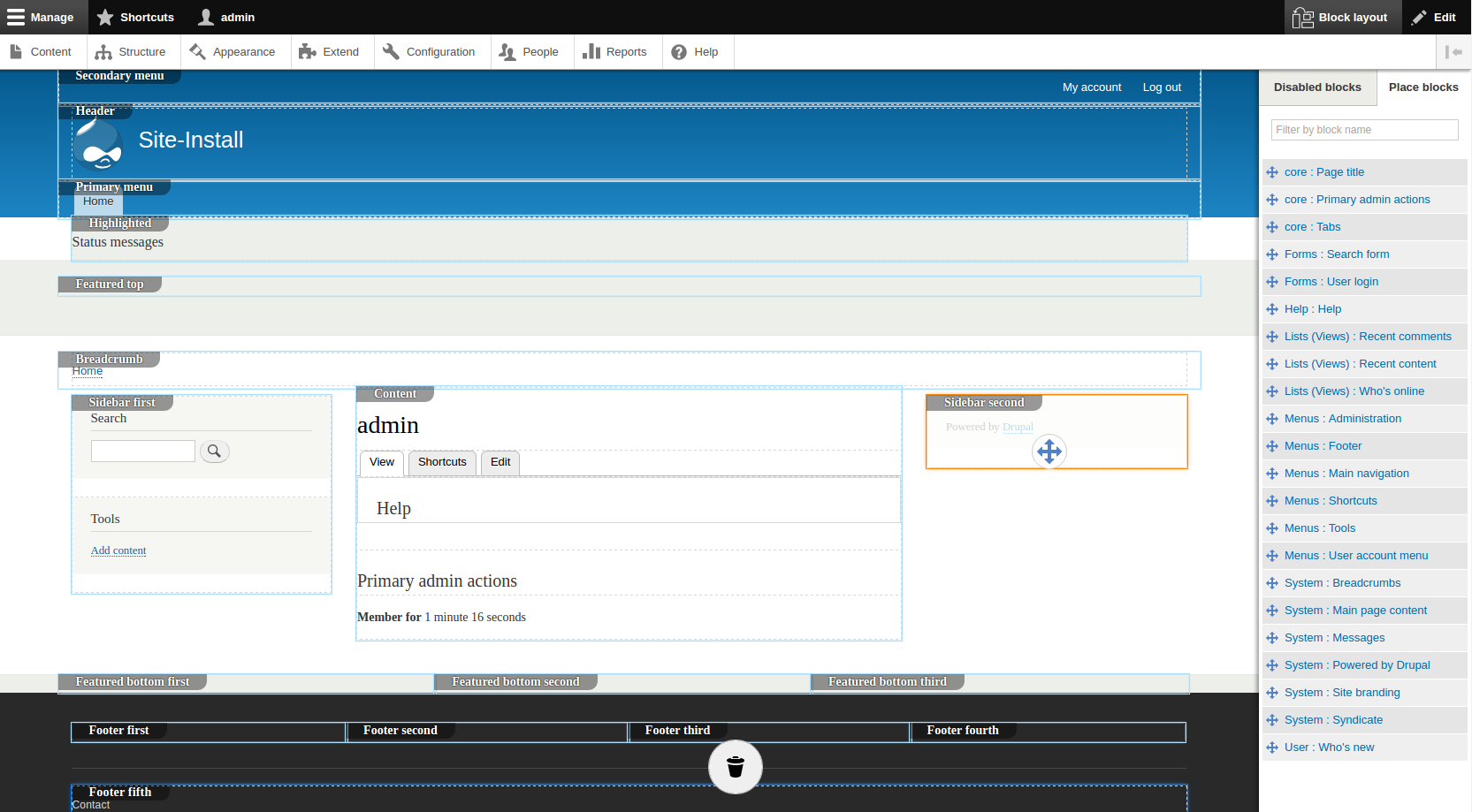
Drupal’s editor, integrated through modules such as CKEditor, offers a wide range of features tailored for content creation and management. It supports rich text editing and is highly customizable, allowing administrators to configure toolbars and options according to the needs of their site. However, it can be challenging for beginners due to its wide range of features and customization options.
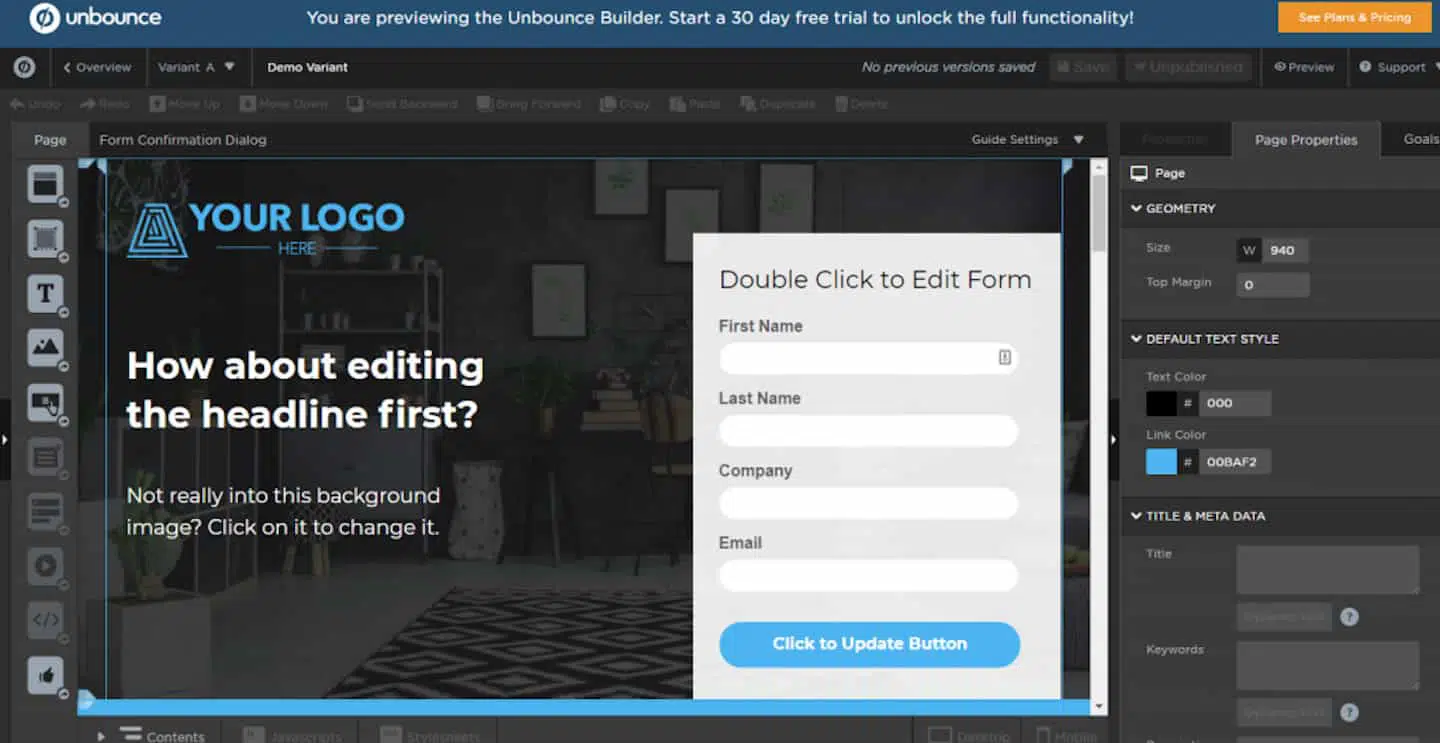
Unbounce’s editor, on the other hand, is equipped with a user-friendly drag-and-drop interface, enabling users to design and customize landing pages without the need for coding skills. It offers a variety of templates, widgets, and elements, and supports responsive design. However, it has a steeper learning curve for new users due to its advanced features.
Mobile editor/app
 0
0
 0
0
🏆
Winner: None
. Both Drupal and Unbounce do not offer a dedicated mobile editor app.
Drupal is an open-source content management system (CMS) known for its flexibility and extensibility, enabling developers to create complex websites with custom functionalities. However, it does not have a dedicated mobile editor app, which can limit its accessibility and convenience for users who prefer to manage their websites on the go.
Unbounce, on the other hand, is a powerful, user-friendly website builder specifically designed for creating custom landing pages, popups, and sticky bars. It is particularly favored for its strong focus on optimizing conversion rates. However, like Drupal, Unbounce does not offer a dedicated mobile editor app, which can be a drawback for users who need to make quick edits or monitor their landing pages while away from their desktop.
In conclusion, while both Drupal and Unbounce offer robust features and capabilities for website and landing page creation, the lack of a dedicated mobile editor app is a significant limitation for both platforms.
Product testing options
Product Testing OptionsAssesses the options for trying out platform features before commitment.Score Components:
- Trial quality (40%): Extent and usefulness of the trial or free version.
- Feature accessibility (30%): How many features are available to test.
- Trial duration (20%): Length of the trial period.
- Ease of transition (10%): Smoothness of moving from trial to paid plans.
 7.1
7.1
 6.6
6.6
Overall Result
:
Drupal wins
. Drupal scores 7.1, while Unbounce scores 6.6 in product testing options. Drupal, being an open-source CMS, offers a free version but no trial version or premium features testing. Unbounce, on the other hand, does not have a free version but offers a 14-day free trial with the possibility to test premium features. However, it requires users to enter their billing information for the free trial and does not offer a money-back guarantee.

|

|
|
|---|---|---|
|
Free Plan |
Yes (open-source software) |
No |
|
Trial Duration |
No | 14 days |
|
Testing Premium Features |
No |
Yes, during the 14-day free trial |
|
Money Back Guarantee |
Not applicable | No |
Price
PriceLooks at the cost-effectiveness and value for money of each platform.Score Components:
- Plan value (40%): What each pricing tier offers.
- Transparency and clarity (30%): Clearness of pricing structures.
- Flexibility of plans (20%): Range of options to suit different budgets.
- Hidden costs (10%): Additional expenses not included in the plan.
 5.7
5.7
 7.0
7.0
Unbounce offers a range of price plans, while Drupal is free but requires separate purchases for domain, hosting, and website builder subscriptions.

|

|
|
|---|---|---|
|
$90-$100 |
No offering at this amount. |
Build ($99.00/month): Provides tools for building and launching high-converting landing pages, unlimited pages, popups, sticky bars, a form builder, free hosting, AI copywriting, custom scripts, 1,000+ integrations, support for 1 root domain with unlimited subdomains, catering up to 20,000 monthly unique visitors. Value for price: 6.5 |
|
$100-$200 |
No offering at this amount. |
Experiment ($149.00/month): Includes everything in the Build plan plus unlimited A/B tests, advanced reporting, dynamic text replacement, support for 2 root domains, and up to 30,000 monthly unique visitors. Value for price: 7.5 |
|
$200-$300 |
No offering at this amount. |
Optimize ($249.00/month): Adds to the Experiment plan with AI traffic optimization, visitor behavior insights, advanced targeting, supports 3 root domains, and caters to up to 50,000 monthly unique visitors. Value for price: 8.0 |
|
$600+ |
No offering at this amount. |
Concierge (Starting at $649/month): Offers everything in the Optimize plan plus dedicated support, implementation services, client and user management, flexible add-on plans for scaling, starting with 5 root domains and 100,000 monthly unique visitors, with options to scale. |
location. As a result in rare cases the prices displayed here can differ from the ones you see on their
websites.
Hosting quality
Hosting
qualityExamines the reliability and performance of the hosting solutions.Score Components:
- Uptime (40%): Consistency and reliability of website availability.
- Speed (30%): Loading times and performance.
- Bandwidth and storage (20%): Sufficiency of resources provided.
- Data centers (10%): Quality and distribution of hosting infrastructure.
 0
0
 3.9
3.9
Winner: Unbounce
. Unbounce provides hosting as part of its service, offering a high uptime of 99.96%. Drupal, on the other hand, does not provide hosting directly, leaving the choice of hosting type and provider to the user. This flexibility can be advantageous for experienced developers, but it can also be a challenge for beginners.

|

|
|
|---|---|---|
|
Do they offer hosting? |
No | Yes |
|
Data Centers: |
Depends on hosting provider | Not disclosed |
|
Type of hosting: |
Depends on hosting provider | Not specified |
|
Uptime: |
Depends on hosting provider | 99.96% |
|
Uptime Guarantee: |
Depends on hosting provider | No |
Website Speed Optimization
Website Speed OptimizationEvaluates optimization of website loading timesScore Components:
- PageSpeed Score (30%): Google’s score indicating performance optimization.
- Loading Time (30%): The average time until a website is fully interactive.
- Mobile Optimization (15%): Optimization effectiveness for mobile devices.
- Resource Optimization (15%): Optimizing images, scripts, and other heavy resources.
- CDN Usage (10%): Use of CDN to enhance speed across geolocations.
 6.4
6.4
 5.6
5.6
🏆 Winner: Drupal
Both Drupal and Unbounce have their own strategies for website speed optimization. However, Drupal’s open-source nature and extensive guides and tutorials give it an edge over Unbounce.

|

|
|
|---|---|---|
|
Focus |
Extensive guides and tutorials |
Image optimization, Caching, Speed Booster |
|
Performance Tools |
Various Drupal modules |
Unbounce’s built-in tools |
|
Key Strategies |
Users can optimize almost all aspects |
Image optimization, Caching, Speed Booster |
|
Load Times |
Varies depending on optimization and website complexity |
Varies depending on optimization and website complexity |
|
Page Speed Scores Range |
Varies depending on optimization and website complexity |
Varies depending on optimization and website complexity |
|
Core Web Vitals Improvement |
Depends on users |
No information provided |
Drupal, an open-source CMS, offers numerous guides and tutorials on speed optimization, allowing users to optimize almost all aspects of their website. The load times and PageSpeed scores vary depending on the optimization and website complexity. The Core Web Vital improvements depend on the users.
Unbounce, a website builder, focuses on image optimization, caching, and speed booster for speed optimization. The load times and PageSpeed scores also vary depending on the optimization and website complexity. Unbounce does not provide any information on their Core Web Vital improvements.
Get a head start on website creation with AI
Create a custom website tailored to your business needs 10X faster with 10Web AI Website Builder!
Plugins and integrations
Plugins and integrationsMeasures the range and effectiveness of additional plugins and integrations.Score Components:
- Variety of options (40%): Range of available add-ons.
- Integration smoothness (30%): Ease of integrating plugins into the site.
- Quality of plugins (20%): Functionality and reliability of the options.
- Custom integration capabilities (10%): Support for custom or third-party integrations.
 8.6
8.6
 6.8
6.8
🏆 Winner: Drupal.
With a score of 8.6, Drupal outperforms Unbounce, which scores 6.8. Drupal’s extensive range of over 51,000 modules, which are mostly free and open source, gives it a significant edge over Unbounce’s 50+ apps and integrations. Drupal’s modules extend the platform’s capabilities beyond its core features, enabling functionalities like advanced SEO tools, e-commerce solutions, and custom content types and fields.
Unbounce’s integrations, while fewer, also extend its base capabilities significantly, allowing for advanced analytics, enhanced marketing automation, direct e-commerce transactions, and personalized user engagements. However, Drupal’s larger community, greater number of modules, and higher score make it the winner in this category.
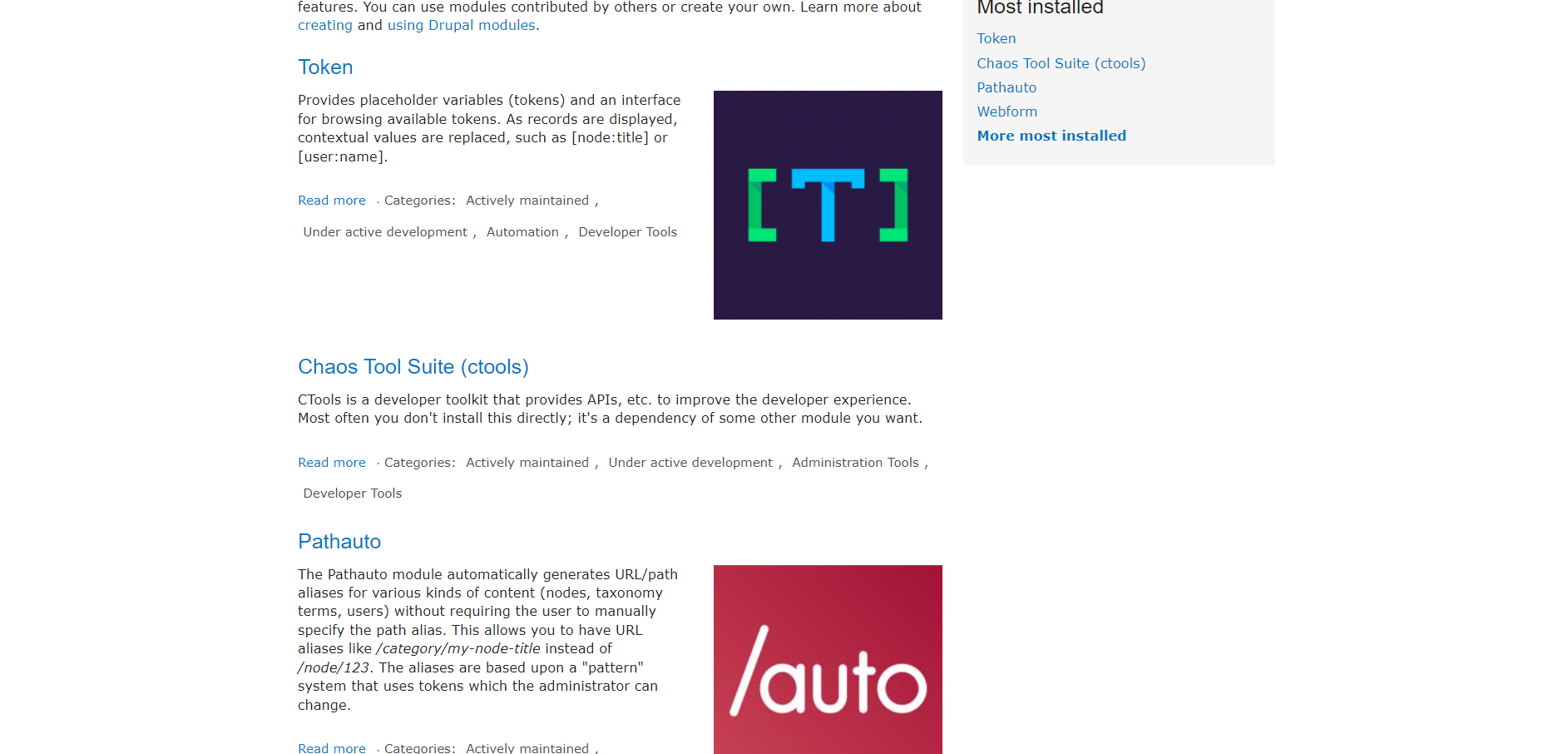

Marketing Features
Design FunctionalitiesRepresents how well each platform allows for creative design and customization of websites.Score Components:
- Template Variety (30%): Range and quality of design templates.
- Customization (30%): Flexibility and options for design alterations.
- User Interface (20%): Ease and intuitiveness of the design process.
- Responsiveness (10%): Adaptability to different devices and screen sizes.
- Innovation (10%): Unique design features and tools.
 8.0
8.0
 7.4
7.4
🏆
Overall Winner: Drupal
. Drupal stands out for its flexibility and extensibility, enabling developers to create complex websites with custom functionalities. Unbounce is strong in creating custom landing pages, popups, and sticky bars, ideal for optimizing conversion rates.

|

|
|
|---|---|---|
|
SEO Tools |
|
|
|
Email Marketing |
|
|
|
Blogging |
|
|
|
Social Media Integration |
|
|
|
Analytics and Reporting |
|
|
|
Ads and Promotions |
|
|
Customer Support
Customer supportEvaluates the quality and availability of support options.Score Components:
- Response time (40%): Speed of support responses.
- Support quality (30%): Effectiveness and helpfulness of the support.
- Availability (20%): Range of support channels (phone, chat, email).
- Resource richness (10%): Quality of self-help and educational materials.
 6.7
6.7
 7.7
7.7
🏆 Winner: Unbounce
. In the Drupal vs Unbounce comparison, Unbounce takes the lead with a higher customer support score of 7.7. Unbounce offers a variety of support options, including live chat, email, and phone support, available Monday to Friday from 6 AM to 6 PM PST. Additionally, users can access 24/7 support through their Help Centre, Community, and Chat Bot, ensuring continuous assistance.
Drupal, with a customer support score of 6.7, provides a comprehensive range of support options, including community support through Drupal.org and professional 24/7 support services via providers like Drupal Connect. While Drupal’s community support is robust, the professional support services are often provided by third-party providers, which may not be as seamless as Unbounce’s integrated support system.
For enterprise-level support, Unbounce excels with its concierge enterprise plan, offering dedicated customer support, personalized training, and optimization sessions. Drupal, on the other hand, does not have a specific enterprise support plan, which may be a limitation for larger organizations seeking tailored assistance.
Security
SecurityLooks at the platforms’ security measures and data protection.Score Components:
- Data protection (40%): Safeguards for user and customer data.
- SSL and encryption (30%): Implementation of secure connections.
- Compliance (20%): Adherence to industry security standards.
- Regular updates (10%): Frequency of security updates and patches.
 8.3
8.3
 8.4
8.4
🏆
Winner: Unbounce
. Unbounce slightly edges out Drupal with a security score of 8.4 compared to Drupal’s 8.3. Unbounce’s security measures include achieving PCI Level 4 Merchant status, adhering to GDPR, implementing robust disaster recovery strategies, and undergoing regular external security audits. The platform employs a secure, multi-tenant environment with strict access controls and daily data backups to safeguard customer information.
Drupal, on the other hand, is an open-source CMS that requires users to configure the system securely, including using HTTPS and setting up a private file system. It also emphasizes website security through regular updates for both its core and contributed modules, alongside offering robust configuration options for enhanced protection. Drupal’s proactive security approach is bolstered by a dedicated security team that continuously works on identifying and fixing vulnerabilities.
AI Capabilities
AI capabilitiesMeasures the effectiveness of AI-driven features and tools.Score Components:
- Automation efficiency (40%): Impact of AI on streamlining processes.
- Personalization (30%): AI-driven customization for users or customers.
- AI-Assisted design (20%): Role of AI in website design and functionality.
- Data analysis (10%): Use of AI in interpreting user data and analytics.
 7.5
7.5
 7.5
7.5

|

|
|
|---|---|---|
|
AI Builder |
|
Unbounce’s Smart Builder uses AI for landing page creation |
|
AI Ecommerce features |
AI-enhanced chatbots, content creation, marketing automation |
|
|
AI Content Generation |
AI Connect module for content generation and SEO optimization |
Smart Copy tool for generating various types of content |
|
Additional AI Features |
AI-based search enhancements, content personalization |
Smart Traffic for visitor direction, Conversion Intelligence Insights for landing page effectiveness |
🏆 Winner: Tie
. Both Drupal and Unbounce have a score of 7.5 for their AI capabilities. Drupal’s AI capabilities are integrated across various functionalities, enhancing e-commerce through chatbots, content creation, marketing automation, and cognitive services. Unbounce, on the other hand, uses AI in its Smart Builder to optimize landing page creation and includes AI content generation features and additional AI features like Smart Traffic and Conversion Intelligence Insights.
User Management
User ManagementAssesses the platforms’ capabilities in managing user roles, permissions, and accessibility.Score Components:
- Role Customization (40%): Flexibility in creating and defining user roles and
permissions. - Ease of Management (30%): User interface and tools for managing users.
- Access Control (20%): Effectiveness of access control measures for different user
levels. - Scalability (10%): Ability to manage a growing number of users efficiently.
 9.1
9.1
 7.2
7.2
🏆 Winner: Drupal
. Drupal’s flexible permission and role system allows for an unlimited number of users to manage and edit a website, only constrained by server capacity and practical management considerations. Administrators can create various roles, such as “Editor” or “Administrator”, each with customized permissions. There’s no inherent limit in Drupal on the number of users with administrative or editing capabilities, enabling extensive collaboration and content management possibilities.
On the other hand, Unbounce offers one staff account on its basic plan, with the option to expand up to 15 accounts on the premium plan. It also provides customizable permissions, enabling you to restrict or grant access based on roles such as viewer, author, and administrator.
Drupal User Roles and Access Levels:
| Role | Description | Access Highlights |
|---|---|---|
| Editor | Users responsible for content creation, editing, and publishing. | Can create, edit, delete, and publish content; can also manage comments. |
| Moderator | Users focused on site moderation, including comment and user management. | Can approve or delete comments, block users, and manage reported content. |
| Administrator | Users with full access to all administrative features of the site. | Can change site configuration, manage all content, users, permissions, and install modules/themes. |
Unbounce User Roles and Access Levels:
| Role | Description | Access Highlights |
|---|---|---|
| Viewers | Members of your team who want to view and approve pages, popups, or sticky bars before publication. | Can access pages, popups, sticky bars, stats, and leads. Cannot edit/manage pages or access account management, billing details, domains, or add users. |
| Authors | Designers or copywriters invited to edit landing pages. | Can edit, manage, publish/unpublish pages, popups, sticky bars. Have access to viewing leads and stats. Cannot access account management, billing details, domains, or add users. |
| Administrators | Manage the Unbounce account, including billing details. | Can edit, manage, publish/unpublish pages, popups, sticky bars. Can access account management, billing details, domains, and add users. Cannot delete leads or remove other Admins. |
Additional Features

|

|
|
|---|---|---|
|
SSL Certificate |
|
|
|
Custom Domain |
|
|
|
Free Custom Domain Included |
|
|
|
International Domains |
|
|
|
Mobile Responsive |
|
|
|
Page Speed |
|
|
|
Website Builder Mobile App |
|
|
|
Convert a Website To An App |
|
|
|
Website Analytics |
|
|
|
Multilingual Sites |
|
|
|
Multiple Users |
|
|
User Feedback
Users appreciate Drupal for its ease of use, security, and flexibility as an open-source CMS, highlighting its ability to scale and support a variety of websites and applications with modern technology tools. The community and documentation are frequently mentioned positives, providing ample support and resources. However, criticisms include a relative lack of plugins and themes compared to competitors like WordPress, the learning curve for customization without coding, and some challenges with installation and updates. The platform is praised for its robust content management capabilities, enabling users to manage content and user access efficiently. Overall, feedback underscores Drupal’s strength in creating secure, customizable, and scalable web solutions, despite some desires for more intuitive UI and easier setup.
The reviews for Unbounce reveal a mixed sentiment among users. On the positive side, many appreciate its user-friendly, drag-and-drop page builder, which facilitates the quick creation and editing of landing pages without the need for technical expertise. Users find it beneficial for A/B testing, integrating with CRMs, and swiftly turning around marketing content. However, there are notable concerns, particularly with a case of unexpected switch to an annual plan without consent and refusal to refund, indicating potential issues with customer service and billing practices. Additionally, some users mention technical limitations, such as responsiveness issues and the absence of global elements for content updates across multiple pages, which can hinder efficiency.
The making of this blog
We followed a clear, step-by-step process to write and research this article.
FAQ
What are the main differences between Drupal and Unbounce?
Which platform is better for ecommerce, Drupal or Unbounce?
Can I build a content-rich informational website with Unbounce?
Is Drupal easy to use for beginners?
How do Drupal and Unbounce compare in terms of price?
Which platform offers better customer support?
Are there any security concerns with using Unbounce or Drupal?










